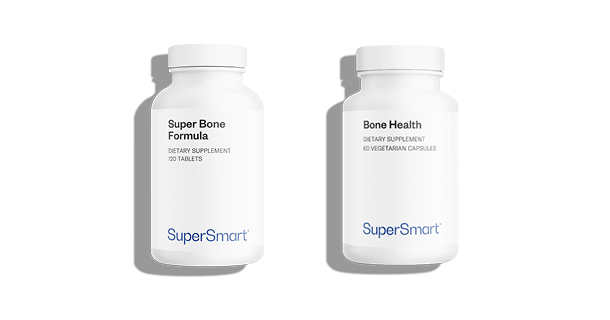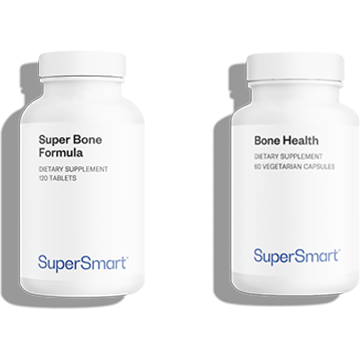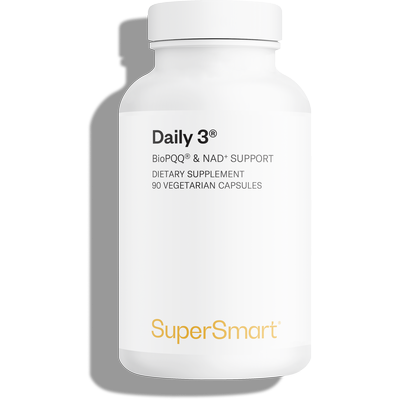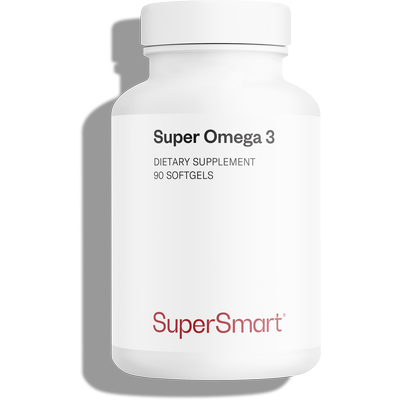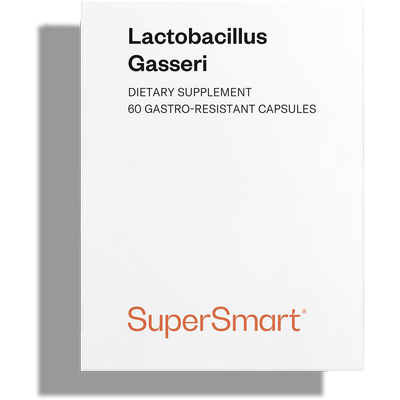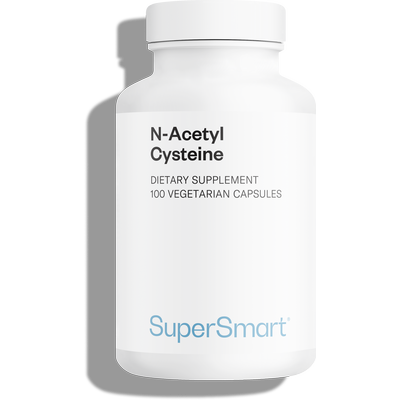In stock
SuperBone Formula + Bone Health
Complete your selection
What is in it SuperBone Formula + Bone Health
Any questions?
Primarily linked to ageing, osteoporosis is a natural process characterised by a decrease in bone mass and bone density. It makes bones more ‘porous’ and vulnerable to fractures from even simple falls. As bone loss does not normally produce any symptoms prior to a fracture, it is known as ‘the silent disease’. But why does this bone loss occur?
Our bones undergo constant remodelling throughout life via a two-fold process:
- A resorption phase during which specialised cells called ‘osteoclasts’ eat away at existing bone structures. This leads to the development of holes in the bones (called Howship lacunae).
- A new formation phase during which other specialised cells called ‘osteoblasts’ make new bone structures to compensate for the ‘holes’ and restore bones to a healthy state. Minerals then accumulate in the new matrix to optimise the bones’ mechanical resistance.
This dual process allows the body to be in constant harmony with its environment. In this way, damaged bones are quickly rebuilt and the body is even able to make stronger bones if environmental factors change (such as when we engage in a new physical activity). However, it’s important that this two-fold process remains in balance: if the resorption phase gains the upper hand, the ‘holes’ are never filled in and bones become dangerously fragile. This is exactly what happens in osteoporosis.
A number of factors affect the balance of this bone remodelling (1):
- Sex hormones. Oestrogens are the main regulators of bone tissue remodelling. They target osteoblasts and are powerful inhibitors of bone resorption by osteoclasts. The fall in oestrogen caused by the menopause leads to an enduring imbalance in bone renewal: gains start to be outweighed by losses and osteoporosis develops rapidly.
- Mechanical constraints. Bones are able to adapt according to the level of physical restraint to which they’re subjected. When you suddenly stop exercising, following an injury for example, physical stimulation stops, which increases the resorption phase and reduces the rebuilding phase. Physical inactivity is therefore a cause of osteoporosis over the long term.
- Bone Morphogenetic Proteins (BMPs). These are proteins which promote the bone formation phase.
- Insulin Growth Factors (IGFs). These stimulate osteoblast activity.
- Transforming Growth Factor (TGF). This is a group of messengers that significantly influence the two phases of bone remodelling.
- Vitamin D. This vitamin plays an essential role in bone renewal: it stimulates intestinal absorption of calcium and phosphate (which are used to mineralise new bones) and inhibits parathormone, a protein that stimulates bone resorption.
Super Bone Formula is recommended for all the following groups of people:
- Those over 40 (bone mass starts to decline at this age, by 1%-2% a year).
- Post-menopausal women (in the decade following the onset of menopause, loss of bone mass accelerates by 2%-3% a year due to a decline in oestrogen production).
- Those with a family history of osteoporosis-related fractures.
- Women who do little or no exercise.
- Those suffering from inflammatory bowel disease (such as Crohn’s).
Bone Health contains a blend of four plant extracts traditionally used for combatting bone loss.
Eucommia ulmoidesleaves
This is one of the most commonly prescribed natural treatments in China for treating osteoporosis (2-3). According to the theory of traditional Chinese medicine, Eucommia ulmoides (which is also called Du-Zhong in Asia) optimises the health of the kidneys which nourish and support bone tissue.
While modern science has demonstrated the anti-osteoporosis properties of Eucommia ulmoides, the mechanism of action is not yet clear. Several studies have shown that the plant’s non-steroidal polyphenolic lignans (4) behave in the same way as oestrogens. These ‘phytoestrogens’ may also bind to ‘oestrogen receptor alpha’ (5-7), potentially upregulating the activity of a number of genes central to osteoblast function (8).
It is this mechanism which may explain their ability to stimulate the phase of bone formation by osteoblasts (9) and thus increase bone mineral density, without causing any side-effects (10).
Astragalus root
Astragalus is well-known for its adaptogen properties but this traditionally used plant has other strings to its bow. With a high content of flavonoids, particularly isoflavones (11), it has been used for thousands of years to counteract osteoporosis (12).
Research has shown that it acts on two factors involved in bone remodelling (13-14):
- It increases levels of TGF-β1, a growth factor which actively supports bone formation. This factor enables the recruitment, differentiation and proliferation of osteoblasts necessary for bone formation (15-16).
- It also reduces levels of TGF-α, another growth factor that plays an important role in bone resorption and strongly promotes bone destruction by osteoclasts. After the menopause, levels of TGF-β1 fall (17), contributing to the imbalance in bone remodelling.
Scientists believe that the isoflavones in Astragalus also interact with oestrogen receptors. Like oestrogens, they increase the absorption of calcium which is vital for bone remineralisation.
Cuscuta chinensis seeds.
Cuscuta chinensis is a parasitic plant that has been used in traditional medicine for thousands of years for supporting bone function. It is also known as Dodder and Tu-Si-Zi. Its mechanism of action appears to be very similar to that of Astragalus: Cuscuta chinensis also contains a number of flavonoids (18), the most active of which are kaempferol, quercetin, hyperoside, astragalin and lignans (19).
Studies show it supports osteoblast differentiation and proliferation while inhibiting osteoclast activity (20-21).
Extract of Rehmannia root
Rehmannia glutinosa is an edible plant commonly known as Dihuang, used for at least 3000 years in traditional medicine. Modern research has revealed the presence of numerous bioactive compounds including flavonoids and monoterpenoids (22). Catalpol appears to be the most effective of the monoterpenoids (23) for supporting bone function, though the precise mechanism has yet to be established.
For significant long-term effects, supplementation should be extended for several months, at a dose of 4 tablets a day.
A number of other measures can be adopted at the same time:
- supplementation with other beneficial substances (BMPs, …) or natural complementary products such as Bone Health or Super Boswellia.
- regular exposure to sunlight;
- reduced consumption of caffeinated drinks (as they encourage loss of calcium and thus bone resorption phases) ;
- taking up – or returning to – regular exercise (appropriate for your state of health).

